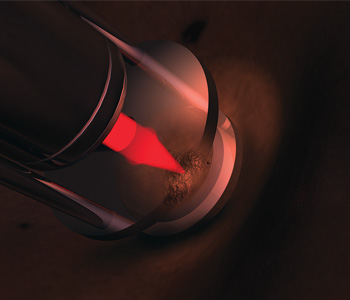Feature
Optical Coherence Elastography
OCE provides 3-D maps of tissue stiffness on the micrometer to millimeter scale, bridging a crucial gap in probing the mechanical properties of diseased tissues.
 Artist's conception of diseased tissue probed by OCE. [Illustration by Phil Saunders/spacechannel.org]
Artist's conception of diseased tissue probed by OCE. [Illustration by Phil Saunders/spacechannel.org]
Since the days of Hippocrates, as early as 400 B.C.E., physicians have used palpation—probing by touch—to identify diseased tissue by variations in its mechanical properties. In the modern clinic, the uses of palpation range from assessment of skin lesions to the guidance of the surgical excision of tumors. Indeed, the usefulness of palpation has, over the past 25 years, given rise to a new family of imaging techniques—known as elastography—that map the spatial variation of the mechanical properties of diseased tissue, with greater accuracy and often much higher resolution than can be achieved by the physician’s touch.
…Log in or become a member to view the full text of this article.
This article may be available for purchase via the search at Optica Publishing Group.
Optica Members get the full text of Optics & Photonics News, plus a variety of other member benefits.
